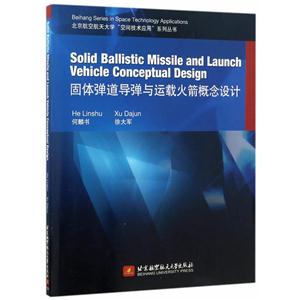-
>
湖南省志(1978-2002)?铁路志
-
>
公路车宝典(ZINN的公路车维修与保养秘籍)
-
>
晶体管电路设计(下)
-
>
基于个性化设计策略的智能交通系统关键技术
-
>
德国克虏伯与晚清火:贸易与仿制模式下的技术转移
-
>
花样百出:贵州少数民族图案填色
-
>
识木:全球220种木材图鉴
固体弹道导弹与运载火箭概念设计 版权信息
- ISBN:9787512423183
- 条形码:9787512423183 ; 978-7-5124-2318-3
- 装帧:暂无
- 册数:暂无
- 重量:暂无
- 所属分类:>
固体弹道导弹与运载火箭概念设计 本书特色
Solid Ballistic Missile and Launch Vehicle Conceptual Design固体弹道导弹与运载火箭概念设计Themaincontentsofthisbookincludetheessentialprinciplesinvolvedintheconceptualdesignofsolidballisticmissileandlaunchvehicle.Thebookisdividedintothreeparts.Thefirstpartgivesbasicandusefulmethodofsolidballisticmissileconceptualdesign.Thesolidlaunchvehicleconceptualdesignmethodwhichissuitabletoarrangesmallsizesatellitelaunchingisdescribedinsecondpart.Thethirdpartpresentsfundamentalsofrocketballisticswhichcanbeusedtocalculatethetrajectoriesofballisticmissileandlaunchvehicle.Thisbookistendedforseniorundergraduateandpostgraduatestudentswhoneedtohavecertainprogrammingability.Thebookisalsousefultoyoungengineerswhohopetostudysomebasicknowledgeinthisfield.
固体弹道导弹与运载火箭概念设计 内容简介
Themaincontentsofthisbookincludetheessentialprinciplesinvolvedintheconceptualdesignofsolidballisticmissileandlaunchvehicle. Thebookisdividedintothreeparts.Thefirstpartgivesbasicandusefulmethodofsolidballisticmissileconceptualdesign.
固体弹道导弹与运载火箭概念设计 目录
-
迷蒙星空-探天之路
¥14.5¥39 -
飞天起航
¥13.9¥35 -
航空工业出版社遥控模型飞机系列遥控像真模型飞机入门
¥20.2¥48 -
航天器自主导航技术
¥39.1¥112 -
国家出版基金 中国航天的历史使命
¥22.8¥68 -
航空超高强度钢的发展
¥25.9¥58




















